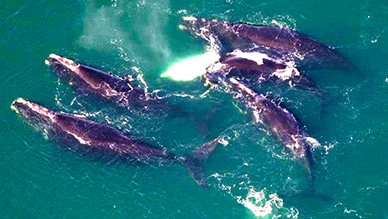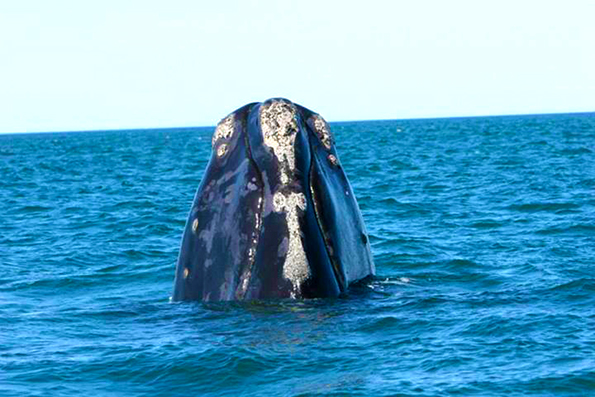Native Floridian Wildlife Spotlight: The Right Whale
By Florida Fish and Wildlife Conservation Commission, NOAA Research Permit # 665-1652 // January 9, 2014
It’s calving season
ABOVE IMAGE: Right whales are dark gray or black and have light-colored “bumps” called callosity, on their head. Researchers use the pattern of this callosity to identify and record information about each individual whale. (Florida Fish and Wildlife Conservation, NOAA Research Permit #15488 image)
BREVARD COUNTY, FLORIDA — It’s calving season! Each year between Nov. 15 and April 15 North Atlantic right whales migrate from their feeding areas in New England and Canada to the warmer, coastal waters off Georgia and northeast Florida. Here they give birth and nurse their young.

The North Atlantic right whale is one of the most endangered large whales in the world. Right whales can be visible from the beach or while boating.
They have no dorsal fin, so their backs are large and flat. This can make them difficult to spot and boaters are urged to keep a sharp lookout and give right whales plenty of space.
Vessel strikes and fishing gear entanglements are currently the largest threats to right whales.
If you spot a right whale, please call 1-877-WHALE HELP to report the sighting.














